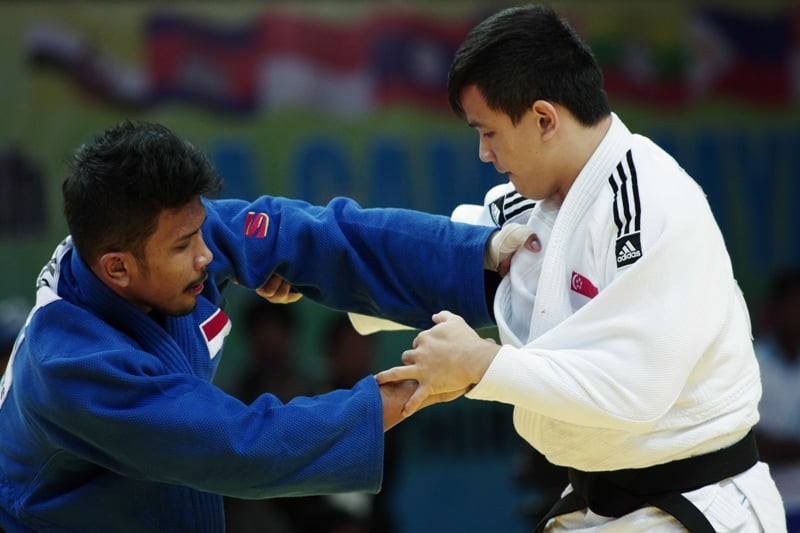Basic rules of Judo

image credit: Aundry Gan/SportSG
A traditional Judo match takes place on tatami mats measuring 14 x 14 metres, with a combat area of 10 x 10 metres marked out within it. Players must wear the designated uniforms with an appropriate knotted belt. The athletes, called Judokas, must bow before stepping onto the mat, and must bow to each other before and after practice or competition. Inappropriate behaviour, such as foul language and bodily gestures are not tolerated.
Judokas are advised not to employ any of the outlawed techniques, including attacking joints other than the elbows, punching or kicking opponents, touching the opponent’s face, or intentionally injuring the opponent in any way.
Each match lasts for five minutes during international competitions, and points and penalties are awarded by the match referee assisted by judges. At the end of each match there is one winner and one loser.
The main objective of each match is for the player to score an “Ippon” (winning point) before the time runs out. The match ends immediately once a player scores an Ippon or is given a “Hansoku-make” (severe penalty). Otherwise, the winner of the match is determined by who has the most points. If the points are equal, whomever has the least number of “Shido” (minor penalties) wins.
An Ippon may be scored under any of the following conditions:
- Throw - Opponent is thrown onto their back with speed, force and control.
- Wazari-awasete-ippon - After a player receives his second Wazari, which is a half-point scored for throws that were not quite an Ippon or for pins that last longer than 15 seconds but less than 20 seconds.
- Pin - Opponent’s back is held to the ground with control for 20 seconds.
- Maitta - Opponent gives up as indicated verbally, with two or more taps using the hand or foot, or if the opponent becomes unconscious. Maitta is also assumed if a pinned player attempts to flee the contest area.
- The player employs a simple banned technique, move or grip.
- The player is defensive, non-combative or avoiding contact.
- The player leaves the contest area or forces their opponent to leave the contest area.
- The player puts a hand, arm, leg or foot directly in the opponent’s face or uniform.
- The player’s strangle technique is improper.
- The player takes an unusual grip and does not immediately attack.
- The player receives a fourth Shido.
- The player employed a grave banned technique or move.
- The player attempts to seriously injure the opponent or is otherwise disrespectful to the opponent or competition officials.
- The player is wearing a banned item.
To receive the latest updates on the happenings in the Singapore sports scene, or to find out more about some of the latest programmes on offer at ActiveSG, like our Facebook page here.





![ActiveSG Academies and Clubs Logo (Solid Colour)[8647]](https://www.activesgcircle.gov.sg/hs-fs/hubfs/ActiveSG%20Circle%202023Theme/images/ActiveSG%20Academies%20and%20Clubs%20Logo%20(Solid%20Colour)%5B8647%5D.png?width=150&height=65&name=ActiveSG%20Academies%20and%20Clubs%20Logo%20(Solid%20Colour)%5B8647%5D.png)



-01.png?width=200&height=141&name=Team%20Singapore%20Logo%20(Red)-01.png)



